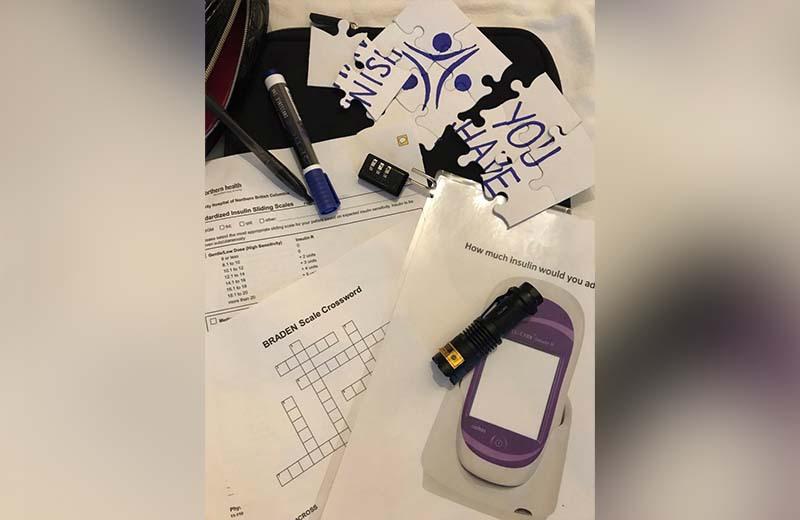Over the past few years, escape rooms, where players work as a team to discover clues, solve puzzles, and accomplish tasks in order to “escape” in a limited time, have become very popular.
In an effort to make education more collaborative and engaging, the education department at Northern Health has recently piloted a new escape-room style of education for its long-term care staff.
The pilot was led by Lindsay Jezierski, a clinical nurse educator at Northern Health, who first learned about similar practices in the United States. Lindsay worked with Northern Health’s health career access program as well as with her colleagues Donna Olsson and Sarah Pelow, both regional educators for long-term care, to introduce this fun interactive education method.
“For years, education has primarily been lecture-based. This new style of educating is a form of social learning,” says Donna.
Some examples of how the new style of educating has been used:
- Crosswords about hypoglycemia (low blood sugar)
- Puzzles about how to stage pressure injuries
- Puzzles about the style of communication known as “Situation, Background, Assessment, Recommendation” (SBAR), which helps staff organize and prioritize information when communicating with doctors.
- Learning activities where you attempt to match cards that list the type of injection on an anatomy chart to match the correct intramuscular injection site (choosing where to give an injection).
“We’re really excited about offering this new style of education. We have received such a positive response from staff,” says Lindsay. “Research has shown this style of education helps learners develop those ‘soft skills’ that are often challenging to teach.”
The team recently piloted the program at Gateway Lodge in Prince George, with the goal of expanding to other long-term care sites.














Comments